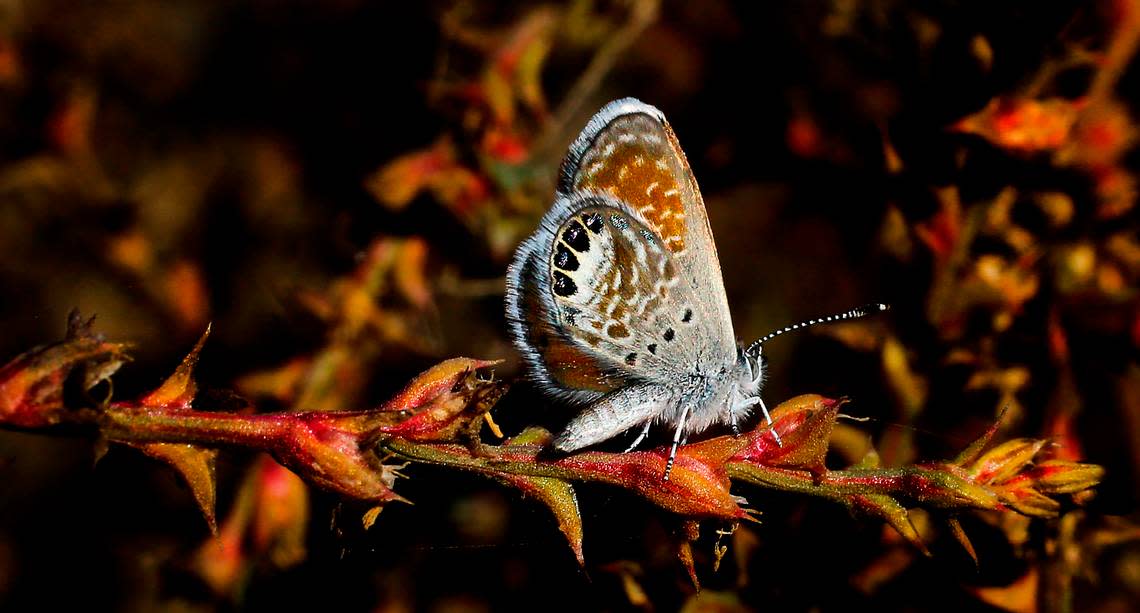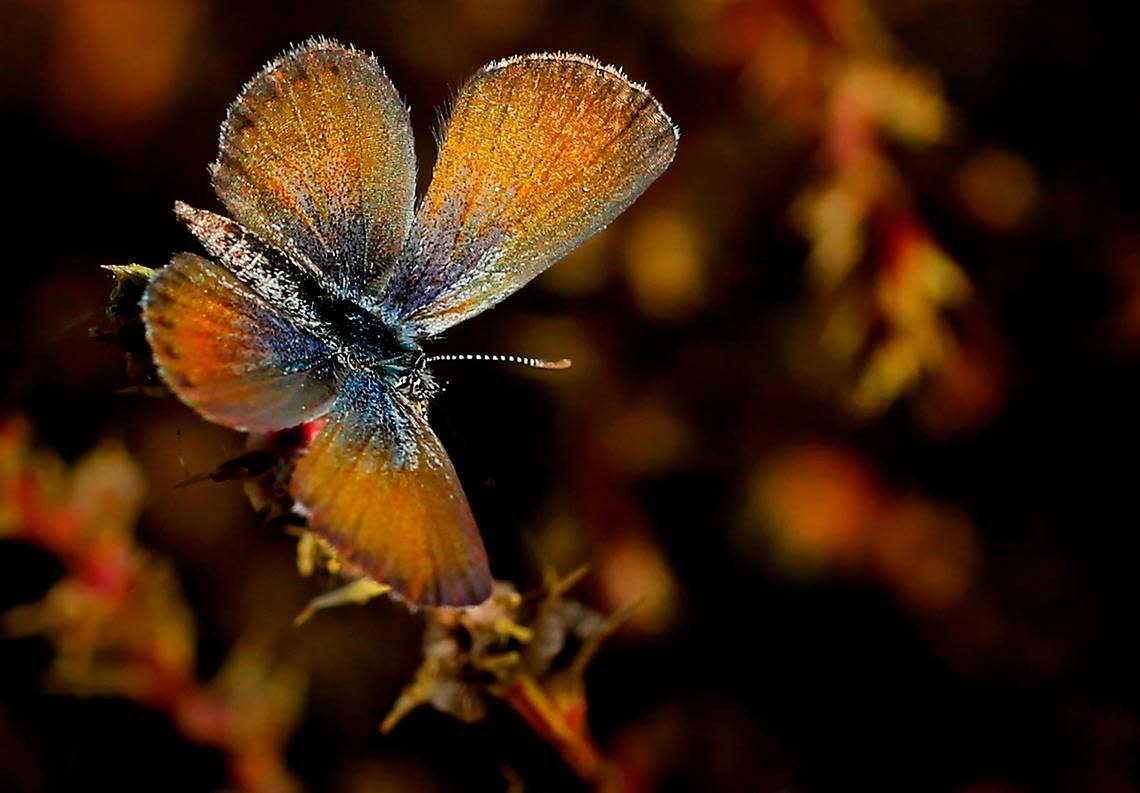Tiniest butterflies in N. America invade Tri-Cities. They’re rarely seen in WA until now
Naturalists have spotted an unexpected sight for Washington state in the Tri-Cities area this fall — the tiniest butterfly species of North America.
At the start of this week close to 30 sightings, and counting, of the western pygmy blue butterfly had been reported in the Tri-Cities area, plus Klickitat and Walla Walla counties, said David James, associate professor of entomology for Washington State University in Prosser.
At one spot by the Yakima River near Richland where James investigated reports, his patient watching was rewarded with more than 100 of the tiny brown and blue butterflies.
“They are like little apparitions — just very tiny indeed and very easy to miss as well,” he said.
The butterfly is about the size of your pinky fingernail, he said, and are easy to miss as they dart around close to the ground.
Twenty years ago the butterflies never were spotted farther north than Southern Oregon, he said.
They typically live in Southern California, Arizona and New Mexico year round.
They don’t migrate, but each fall they expand their range to the north, with the range growing a little each year. But if the new area is too cold, they die off over the winter.
How they got to the Tri-Cities is a mystery.
Tiny butterflies and tumbleweeds
They are so tiny that there has been speculation that they are blown by the wind.
But the western pygmy blue butterflies showing up now have been spotted mostly along rivers, including the Columbia and Yakima rivers in the Tri-Cities area.

That raises the possibility that they are using the rivers in some way and are navigating their way northward, rather than just being blown on the wind, James said.
But it also is possible that since the word has spread that the tiny butterflies have been seen along waterways, that’s where they are found because that’s where naturalists have looked for them, he said.
“Really we know very little about how they actually move,” he said.
Unlike many other butterflies, western pygmy blue are not spotted in pristine mountains, but in “pretty scabby landscape,” James said.
One of their favorite foods is the unwanted Russian thistle weed, which soon will be rolling across the landscape as tumbleweeds in the Tri-Cities.
The butterflies feed on the seeds and flowers and caterpillars feed on the seeds and greenery of the plant.
As the thistles detach from the ground and start tumbling, they’ll likely take western pygmy blue chrysalis along for the ride.
Rarely seen in WA until now
The western pygmy blue was first spotted in Washington state in 2004, James said.
Then it was predicted that with warming of the climate there might be more seen in Washington.
Some years since then there have been reports of a single sighting in the Mid-Columbia and then no more.
It took 18 years for significant numbers of the butterflies to arrive in southern Washington, James pointed out.

“The question now as a biologist is to understand or to see whether they will actually be able to establish populations here,” he said. “It think it’s unlikely at this point but sometime in the future they probably will.”
He suspects they will not be able to survive two weeks of below freezing temperatures in the Tri-Cities area and the butterflies here now will die out.
But they may be back next fall, he said.
Spotted in, near Tri-Cities
James first learned the western pygmy blue was in the Mid-Columbia this year when he saw an online post from Chris Lindsey, a man who had been taking nature photos near Highway 12 in Walla Walla County.
James identified the posted photo as the western pygmy blue and a “veritable pygmy-mania” started among naturalists of southeastern Washington as other people began looking for the tiny butterflies, he said.
They’ve been seen in several places at the McNary National Wildlife Refuge downriver from the Tri-Cities. After that they were spotted farther north in Leslie Groves Park in Richland and up the Columbia River past Washington State University Tri-Cities, James said.
They don’t seem to have spread upriver as far north as Vantage, he said. But there’s still time this fall for them to spread farther north.
If you see one, you can report it at iNaturalist.org, to the Washington Butterfly Association or by sending an email to James at david_james@wsu.edu.
If you look for them in Russian thistle near the Columbia or Yakima River, bring binoculars or a good camera to see the details in their wings, James advises.
“It is a beautiful little creature,” he said.
James, the coauthor of “Life Histories of Cascadia Butterflies,” is monitoring them at a spot near the Yakima River to see how they fare as the weather cools.
Their days likely are numbered there, he said.
As daytime temperatures fall below 70, in the coming weeks, the western pygmy blue likely will die off, at least this year.
But “with a warming climate likely giving them a longer migration period and opportunities for increased breeding, they may well become an established part of Washington’s butterfly fauna,” he said.
